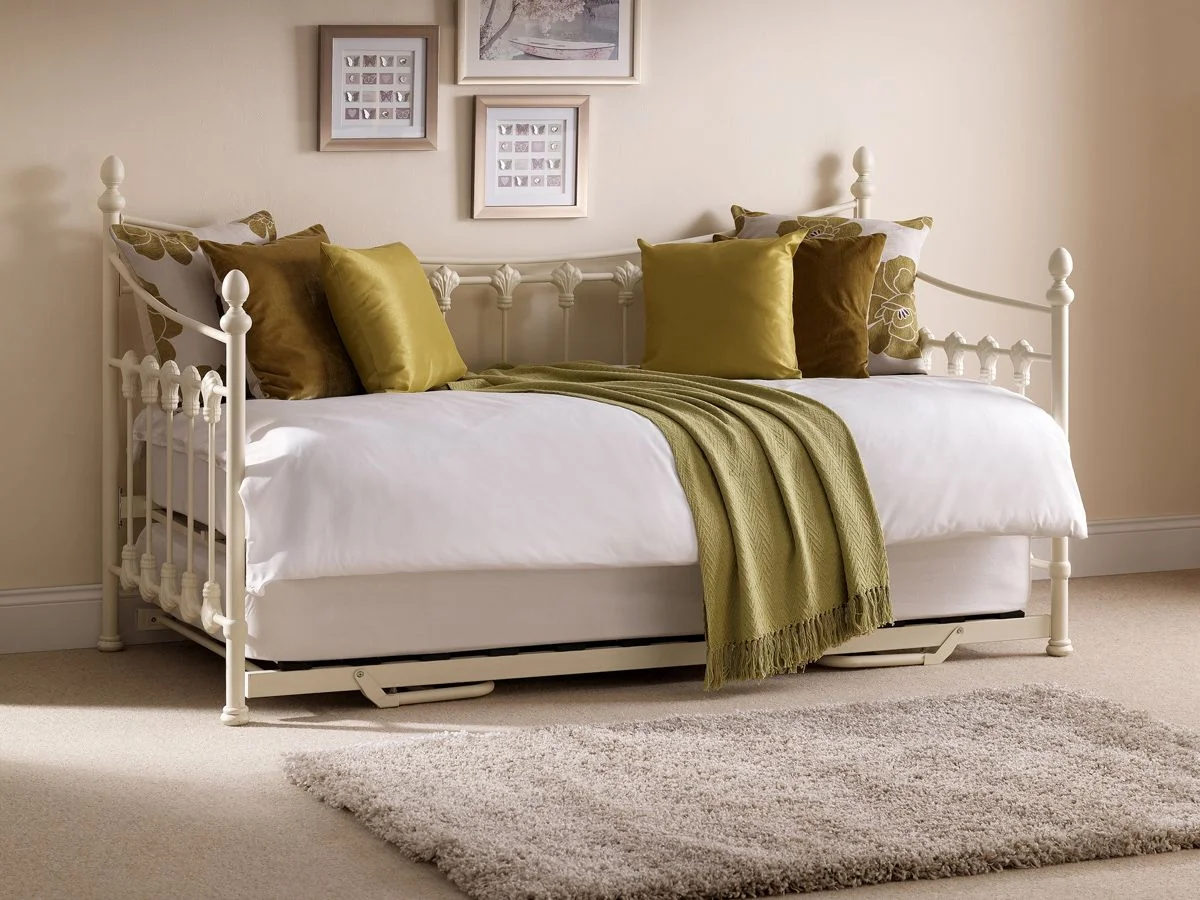Sleep Talk Blog, Product Help, Bed and Mattress Guides
Can I Use a Day Bed as a Regular Bed?
Day beds function as a sofa and a bed, letting you kick back, relax during the day, and sleep on a comfortable bed at night. They convert easily by pulling out the mattress trundle, which converts the sofa into a full-size bed.
You probably want to know if you can use a day bed as a regular bed if you have a small bedroom or temporary sleeping quarters. The good news is that you can use a day bed every night, provided it is comfortable.
Although day beds are designed for temporary sleeping arrangements, a thick enough mattress makes them suitable for use as a regular bed. The thickness of the mattress and support levels are our main priorities.
You want to ensure that the day bed provides a similar sleeping experience to a regular bed so that you wake up refreshed.
The most significant benefit to day beds is they free up floor space – ideal for small bedrooms, kid’s rooms, guest rooms, and multi-use spaces.
What is a day bed?
A day bed is a converting bed frame that works as a bench-like lounging seat when packed away, with a regular bed headboard and a trundle. You convert it into a full-size bed by pulling out the trundle and fixing it into place.
Day beds are a fantastic option for bedrooms lacking length because they pack away and take up very little space. You can also get them in various styles.
Day bed vs sofa beds

Unlike sofa beds which look like sofas, day beds prioritise sleeping comfort. They don’t pretend to be a sofa with a dedicated, thick mattress that provides a more typical sleeping experience for greater comfort and support.
Day beds are more comfortable than sofa beds but don’t look like a sofa, so which best depends on your goal. If you want to sleep on it every night, then a day bed will suit you better than a sofa bed.
What are day beds best for?
Day beds are most suited to children’s bedrooms because they free up space, and the thin mattress is more suitable for their weight.
Adults are also suited to sleeping on a day bed, but the mattress needs to be at least 20cm thick to provide adequate daily support.
Most day beds live in guest rooms and spare rooms as a sofa, only converted when someone stops over.
Can I sleep on a day bed every night?
You can sleep on a day bed every day, but whether it delivers comfort depends entirely on the type of base and mattress.
Day bed mattresses are usually no more than 20cm thick, so the heavier you are, the more likely a day bed will not suit you.
Additionally, the base type affects the softness/firmness of the mattress. Day beds have a solid, slatted, or springy base. Slatted bases increase the softness of the mattress, while solid bases firm things up. Springy bases flex like those old-fashioned put-up beds of the 90s and are unsuitable for sleeping daily.
How thick should a day bed mattress be?
15-20cm is the typical mattress thickness for day beds – they are thinner than regular mattresses because they must fold in half when not in use.
While some day-bed mattresses have springs, it is common for the mattress to be a pure foam variety, like memory or reflex foam.
A thicker day bed mattress usually equals a more comfortable sleeping experience, but the type of bed base is equally important. The best base for a day bed is a slatted or wire cage base, which reduces pressure on the mattress.
Related pages
If you enjoyed this article, read our bed frame buying guide and mattress buyer’s guide for more tips on buying the perfect bed.

